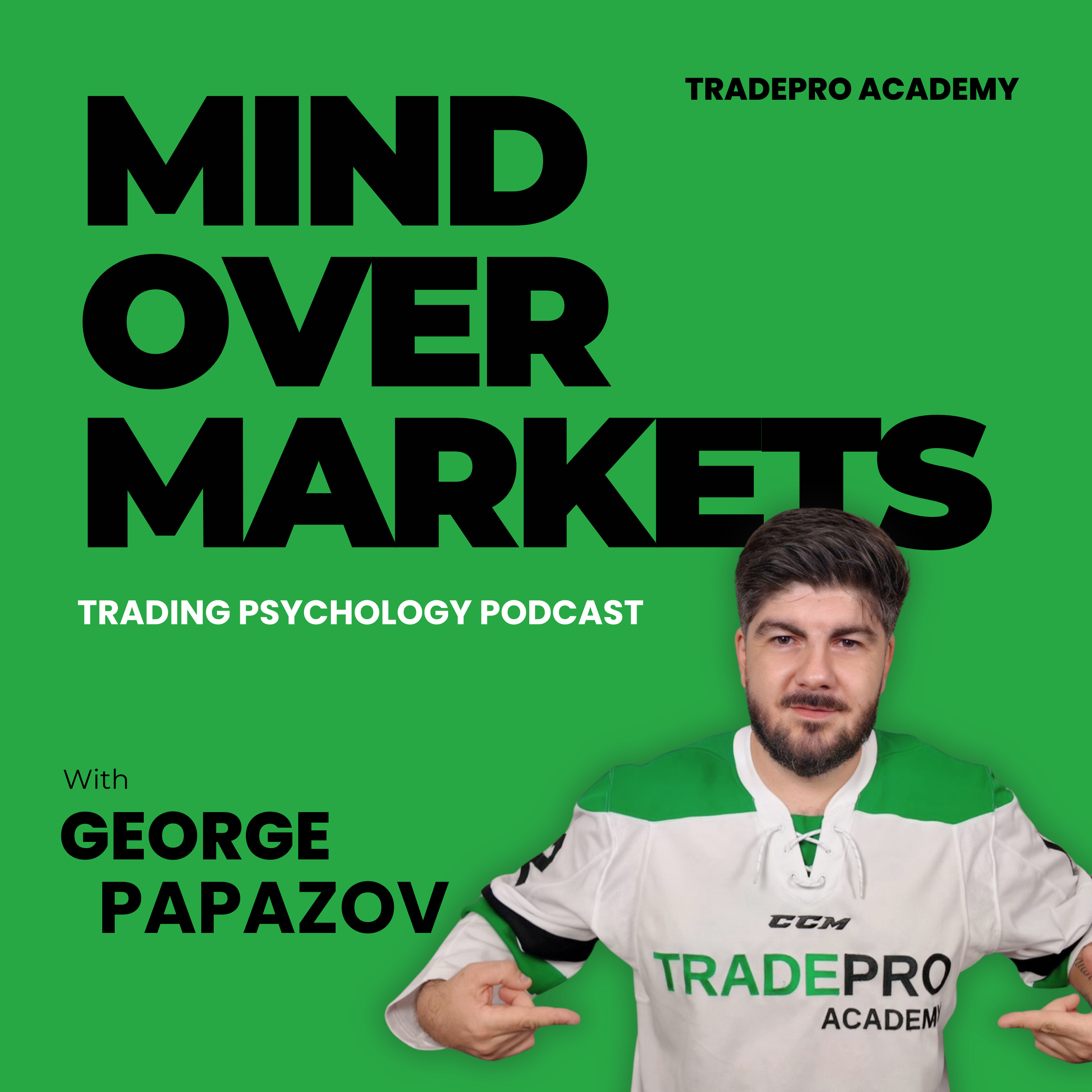

Mind Over Markets: Trading Psychology Podcast
George Papazov
Mind Over Markets is the trading psychology podcast for serious traders ready to master the real edge — their mind. Hosted by George Papazov, founder of TRADEPRO Academy, this show helps you break emotional loops, regulate impulses, and build a confident trader identity. Learn how to rewire your mindset using NLP, coaching, and performance psychology. Ready to go deeper? Unlock the full ASCEND psychology program inside TRADEPRO Academy.
Episodes
Mentioned books

Oct 14, 2021 • 1h 28min
Trading Strategy and Execution with Anthony Drager
Anthony Drager discusses his personal trading strategy and how he executes on order flow in the futures market. He draws on some fascinating experience from the trading floor and his transition to electronic trading at a prop firm. In this episode we get personal and ask him questions about HIS trading. This episode touched on […]

Oct 7, 2021 • 46min
How Buyers and Sellers Move the Market
In this fascinating episode we talk about how buying and selling actually moves the markets. This isn’t an indicator or strategy, this is the VERY REASON that MARKETS MOVE! We do a deep dive on market and limit orders, and how big position traders move through the book. When you understand what you are watching […]

Sep 30, 2021 • 39min
My Struggle With Gambling As A Trader
In this episode I talk about something really personal and deep. I had a gambling problem, which became a trading problem really quickly and early on in my career. This is an area very few talk about, because it requires deep reflection, and the ability to view yourself as someone who can improve! This can […]

Sep 23, 2021 • 1h 21min
Order Flow Trading Foundations with Anthony Drager.
In this episode, former floor and prop trader Anthony Drager comes back for another interview. This time we talk about the foundations of order flow, and unpack some “seemingly simple” concepts into full detail, and explain why most people are doing order flow wrong. Also, Anthony Drager shares his awesome 4 golden rules of trading […]

Sep 16, 2021 • 29min
Want To Be A Good Trader? Become A Good Analyst First.
In this episode we talk about a common mistake all new traders make. The mistake is starting a new career in the wrong position. It’s a costly mistake that ruins would be traders before they even start. There is a way to fix this, and I share the full details on something that will have […]

Sep 9, 2021 • 29min
Why Your Trading Goals Are Holding You Back.
The biggest problem with goals is that they are a prediction of the future. Sure it’s amazing to know what you want, but sometimes planning too much on how exactly you will achieve them leaves blind spots to the reality of how you’re gonna get there. There’s an old saying, “make a plan so you […]

Sep 2, 2021 • 36min
Performance Metrics You Need To Be Using
Total profit is the worst performance metric you can use, because it ignores what you actually did to generate it. In this episode I share my favorite 6 performance metrics, and the story they tell about your trading. Using these metrics, you can uncover areas of improvement before these small issues become big problems, and […]

Aug 26, 2021 • 36min
6 Signs Your Trading Size Might be too Small
At the start of our trading journey, it is a very common problem that newer traders use too much leverage. Why? They are excited, they are new, they don’t know what they don’t know, and they just want to make a lot of money. They want the kind of returns people with 5, 10, 15 […]

Aug 19, 2021 • 1h 14min
Gerald’s Powerful Story and Trading Journey
This is a very powerful, and inspirational interview with Gerald. His story spans from extreme business success, to finding himself in prison. In prison, Gerald discovered trading and even started to get quotes on the phone and drawing his own charts and indicators behind bars. Gerald pushed through his challenges, and continued his pursuit to […]

Aug 12, 2021 • 1h 5min
Interview with 2 Bulls in a China Shop
In today’s episode, we had the pleasure of interviewing two amazing individuals who share their journey as investors and traders. Dan and Kyle join us from the 2 Bulls in a China Shop podcast, and I get to flip the tables on them. As a previous guest on their show, it was exciting to be […]


